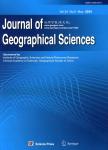Streamflow trends and hydrological response to climatic change in Tarim headwater basin
Streamflow trends and hydrological response to climatic change in Tarim headwater basin作者机构:Institute of Geographic Sciences and Natural Resources Research CAS Beijing 100101 China
出 版 物:《Journal of Geographical Sciences》 (地理学报(英文版))
年 卷 期:2007年第17卷第1期
页 面:51-61页
核心收录:
学科分类:09[农学] 0903[农学-农业资源与环境]
基 金:Foundation: National Natural Science Foundation for Distinguished Young Scholar of China, No.40225004 World Bank Cooperative Project, No.THSD-7
主 题:climatic change EOF Mann-Kendall test runoff streamfiow Tarim Basin wavelet
摘 要:This paper has studied the change of streamflow and the impact of climatic variability conditions on regional hydrological cycle in the headwater of the Tarim River Basin. This study investigates possible causes of observed trends in streamflow in an environment which is highly variable in terms of atmospheric conditions, and where snow and ice melt play an important role in the natural hydrological regime. The discharge trends of three head streams have a significant increase trend from 1957 to 2002 with the Mann-Kendall test. Complex time-frequency distributions in the streamflow regime are demonstrated especially by Morlet wavelet analysis over 40 years. The purpose is to ascertain the nature of climatic factors spatial and temporal distribution, involved the use of EOF (Empirical Orthogonal Function) to compare the dominant temperature, precipitation and evaporation patterns from normally climatic records over the Tarim's headwater basin. It shows that the first principal component was dominated since the 1990s for temperature and precipitation, which identifies the significant ascending trend of spatial and temporal pattern characteristics under the condition of the global warming. An exponential correlation is highlighted between surface air temperature and mean river discharge monthly, so the regional runoff increases by 10%-16% when surface air temperature rises by 1 ℃. Results suggest that headwater basins are the most vulnerable environments from the point of view of climate change, because their watershed properties promote runoff feeding by glacier and snow melt water and their fundamental vulnerability to temperature changes affects rainfall, snowfall, and glacier and ice melt.



